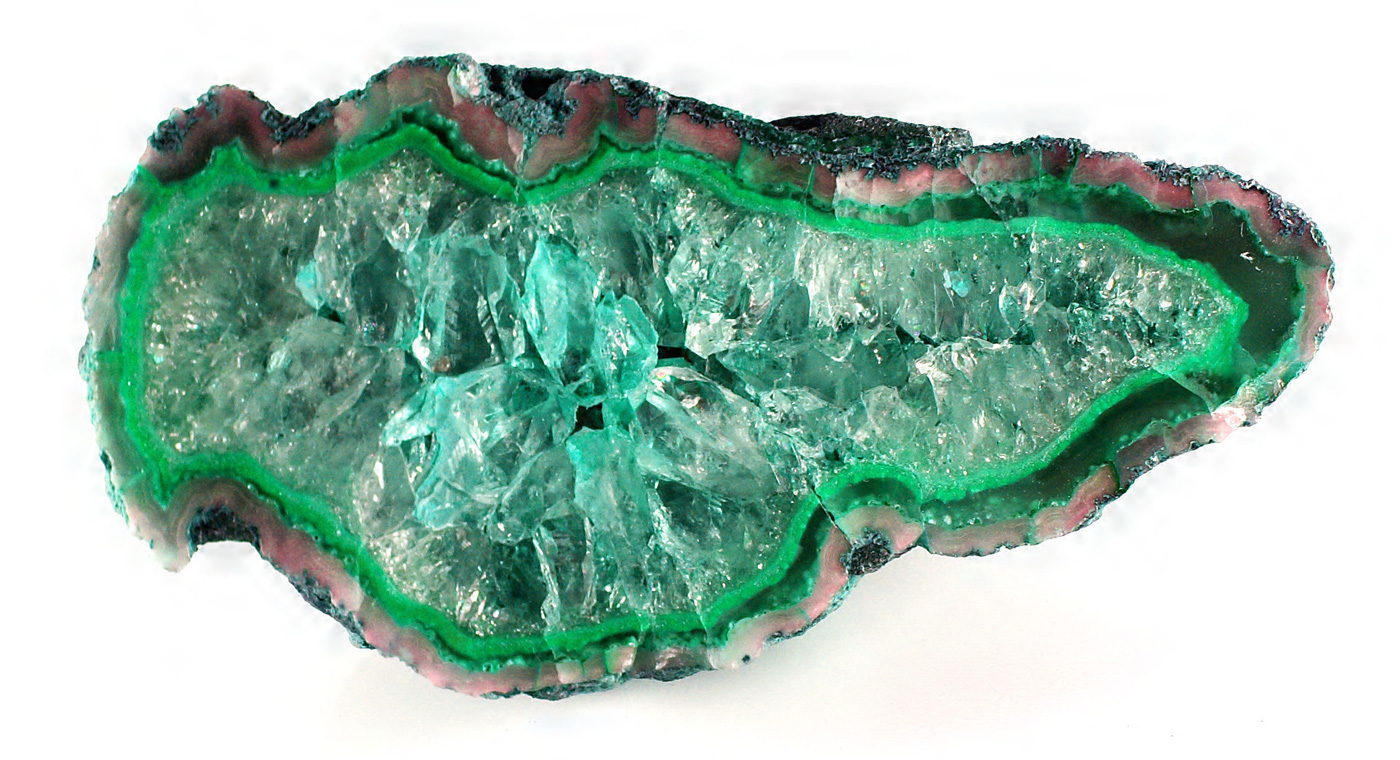Cause of Color : Rose Quartz: Charge transfer reaction (Ti4+ and Fe2+) as a result of irradiation.
Chemical Composition : Silica (Silicon Dioxide) SiO2
Crystal System / Forms : Trigonal System
- Prismatic with pyramidal terminations (rhombohedron, trapezohedron, trigonal, pyramid)
- Horizontal striations on the prism face, rhomb shaped on rhombohedral face, ‘V’ shaped markings in twinned crystals.
- Most quartz is commonly twinned.
- Types of twinning include Dauphine, Brazil and Japan law twinning.
- Exhibits both contact and interpenetrant twinning.
Cuts & Uses : Facetted cuts, cabochon, carvings, beads, etc.
Dispersion : 0.013
Hardness : 7
Lustre : Vitreous.
Magnification : Liquid and two phase, color zoning, negative crystals, zebra-stripe finger prints (structural), crystal inclusions, green fuchsite mica flakes / platelets in aventurine quartz, rutile / tourmaline needles in sagenitic quartz. Brazil law twinning is seen in natural quartz.
Optic Character : Anisotropic, D.R.; Uniaxial positive. May exhibit a bull’s eye optic figure (quartz rotates the plane of polarisation parallel to the c-axis).
Pleochroism : Dichroism - weak to moderate.
Refractive Index / Birefringence : 1.544 – 1.553 / 0.009. Range: 1.535 – 1.560
Sources : Brazil, India, South Africa, Namibia, Madagascar, Zambia, Sri Lanka.
Specific Tests :
- Piezoelectric: develops an electric charge when pressure is applied.
- Pyroelectricity: develops an electrical charge when heated.
- Diasterism in star variety (star visible in reflected and transmitted light).
Spectrum : Green aventurine: bands at 682nm, 649nm
Synthesis : Hydrothermal process:
- Colors – colorless, pink, blue, green, etc.
- Identification: type of twinning, seed plate, breadcrumb inclusions, Raman / infra-red spectroscopy.




























Leave a Reply
You must be logged in to post a comment.